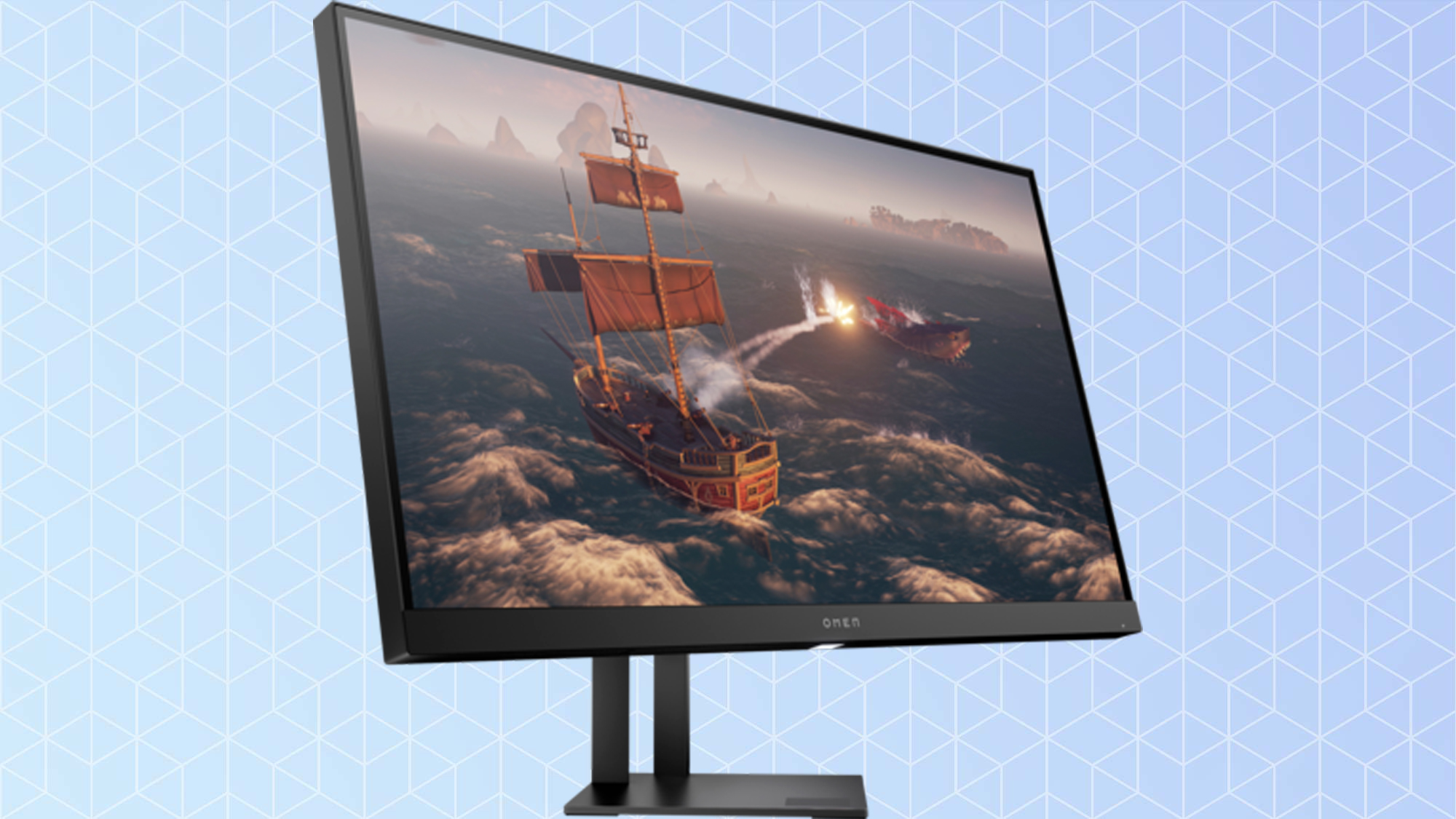How to buy a dumb TV — and why you'd want to
Trying to find a TV without any smart platform, assistants or voice controls? Here's how it's possible

Dumb TVs might soon be the new smart TV. While many of us rushed to the store to pick up a TV with a smart platform when they were first introduced, dozens of data leaks, unwanted software and even violations of privacy are now starting to get people to re-think their relationship with IoT TVs.
Even if there's nothing unsavory about them, most smart TVs come with unwanted ads and may have a shorter usable lifespan as software ages, two good reasons that you might want to consider getting something a bit less...well, smart.
- Check out the best TVs we've tested and reviewed
- Tune in with the best TV antennas, large and small
- Add smarts to any TV with the best streaming devices
If you just want an old-fashioned TV without the bells and whistles, you should probably go for the Sceptre U650CV-U that offers a 4K resolution. It has over 2,800 reviews on Walmart's website, many of which are from users who are happy that they finally found a decent non-smart TV.
Ready to dive into the world of dumb TVs? Keep reading to see why you might want a dumb TV, how to find one, and how to buy the dumb TV that's right for you.
What is a dumb TV?
TVs without built-in internet and smart functionality are often referred to as dumb TVs, since they remove the "smart" features that define smart TVs.
So, dumb TV has become shorthand for any non-smart TV. By offering just the basics of the display, audio and TV tuner, these simpler TVs should give you a solid TV experience with a little more peace of mind and a little less complexity.
Why you still might want to get a smart TV
Let me say this up front. You will get better options and features on pretty much any of the smart TVs on the market than you'll find in a so-called dumb TV. The smart features that have become so popular today also go hand in hand with modern standards of performance and more current capabilities. Because so many major TV makers have gone all-in on smart TVs, it's harder to find certain features that would otherwise be considered basic elements on any smart TV we reviewed.
Sign up to get the BEST of Tom's Guide direct to your inbox.
Get instant access to breaking news, the hottest reviews, great deals and helpful tips.
Resolution is the big one. While you can find non-smart TVs out there, chances are very high that it will only offer 1080p or 720p resolution, instead of the 4K resolution that's become standard.
And any secondary features that rely on internet connectivity will also obviously disappear. You won't get voice control on a dumb TV, nor will you get the option of using an app-based remote control in the event that you lose your TV remote.
But you can still get streaming services through another device, such as one of the best streaming devices or even an internet-connected game console. You may give up a few of the more advanced features, like voice control (though the Roku Voice Remote Pro and Amazon Fire TV Cube can add that) , but all of the content and flexibility of streaming will be ready to go, with the option of disconnecting it whenever you want to be less connected.
And you do have the option of using most smart TVs without connecting them to the internet, rendering most of the smart features moot. While that's not strictly the same thing as a dumb TV with no built-in connectivity at all, it's a much better way to get today's best TV experiences while allaying some fears about the smart TV experience.
Why buy a dumb TV?
Smart TVs may offer lots of exciting functions and a wealth of free and paid content, but there are some real concerns that come with any internet-connected TV.
Privacy
The biggest issue is the justified concern that your TV can spy on you. While it's unlikely that your smart TV is recording your personal conversations and relaying them to the government – though that certainly can happen – the very real worry is that TV manufacturers track your viewing habits closely. And this is not an unfounded fear, it's actually part of the business model.
TV manufacturers have found a new source of profit in the age of connected TVs. By monitoring your viewing behavior – literally, what you watch, when you watch it, and for how long – TV manufacturers collect and frequently sell large amounts of information about their customers viewing habits.
And the worst part? You likely agreed to this tracking when you set up the TV. Part of the setup process of most current smart TVs includes some language about gathering and sharing data. It may be dressed up in disclaimers, or buried in the fine print as you are activating features like the voice assistant or hands-free voice control, but it's there.
Advertising
Smart TVs are also yet another way to fill your life with advertising. The majority of smart TVs not only serve up the latest streaming services, they also serve extra ads on the smart TV menu itself. Whether it's content recommendations that don't quite match your viewing tastes, or outright advertisements for products and services, most smart TVs can and do provide extra advertising. If you want to have a little less corporate intrusion into your life, ditching the smart TV is one way to do so.
Software shelf-life
One issue that new TVs face that your Dad's old tube TV never did was obsolescence. As with computers, smartphones, and anything else that runs software, the shelf life of a product is a lot shorter when you need the right compatibility with the latest apps and services. Once your TV stops supporting the functions you bought it for, like Netflix, it stops being useful, even if all of the component parts still work perfectly.
In 2019, older Samsung TVs from 2010 and 2011 stopped supporting the Netflix app, leaving owners without a key function they originally paid for. And a lot of connected devices (TVs included) will have trouble next year as a result of expired security certificates. That's a little hard to swallow when you consider that a TV can cost several hundred dollars – or even a few thousand dollars – but might only be good for a decade, at most.
Redundancy
The biggest reason to buy a dumb TV isn't privacy or anti-advertising, or any other high-minded motivation. Instead, it might just be due to the fact that we can get plenty of smart TV functions elsewhere – if you have a game console, streaming stick, or any of a number of connected media devices, you can get a pretty full assortment of smart functions without any of them being built into your TV.
How to find a non-smart TV
For several years, the growing popularity of smart TVs still allowed for a healthy selection of non-smart TVs that could be used with all of these connected devices, but that day has mostly passed. Finding a dumb TV to use with a game console or streaming stick is harder than ever before.
Even shopping for a non-smart TV can feel like an exercise in futility. There's no "dumb TV" category on Best Buy's site. Amazon doesn't highlight "non-smart TVs". All of the shopping tools we use today are designed to push you towards the best and latest technology, and in most respects, that means 4K smart TVs.
That said, there are a few shopping tricks you can use:
Lesser known brands, like Sceptre, Supersonic and Caixun offer non-smart models, but you'll probably have to hunt for these brands, let alone the TVs that meet your non-smart TV needs.
And be prepared to sacrifice modern niceties, like 4K resolution and larger screen sizes. The majority of dumb TVs we found offered for sale were full HD (1080p) or even basic HD (720p), and very few were available in sizes larger than 40 inches.
And, if you're willing to look, you can also find one or two non-smart TV models from more recognizable brands, like LG and Best Buy's store-brand Insignia, but be aware, these aren't the current flagship models. Instead, you'll be selecting from older and mostly discontinued models.

Outdoor TVs offer some excellent 4K displays, but none of the smart capabilities you'd get on the top indoor models. Favorites like the SunBriteTV Veranda or the SunBriteTV Pro 2 offer great performance without smart features, and that's the norm for outdoor models. Of the 37 outdoor TVs offered by BestBuy, only three have smart TV functions – and they're all from Samsung's Terrace collection of outdoor smart TVs.
Most outdoor TVs skip the smart functions, and the reasoning here is two-fold: First, it's cheaper to make TVs without the extra processing power and software licensing that are needed for smart functions, and outdoor TV makers spend a lot already beefing up the TV's defenses against the weather. Second, because outdoor TVs are often out where the Wi-Fi signal is weakest, smart functions aren't as big a draw for these models.
The only problem with using an outdoor model indoors is that (on top of being heavy and bulky compared to most indoor sets) they're not great for indoor use. The heavily filtered, backlight boosted displays that are made for full or partial sunlight visibility don't look so great in regular lighting, and the limited viewing angles and less capable HDR support will be noticeable.
Many will also require separate speakers for sound, with no audio built in. For an outdoor set in the backyard, that will usually mean a weatherproofed soundbar, but for indoor use, you can use one of the best soundbars just like any other TV.
Business displays are another alternative. Lots of businesses use "TVs" as displays for customer information, status monitoring, or presentation screens in meeting rooms and offices. While technically not TVs, since they don't have a TV tuner built in to receive broadcast signal, they often fit the bill of 4K displays that lack all of the smart TV features and software.
You can shop specifically for commercial displays and business TVs through retailers like Best Buy, B&H Photo and NewEgg, or you can hunt for products directly from brands like Samsung, LG, Sharp and Panasonic.
But pay attention to the specific product listings, because not all business displays are built alike. Some may not have the usual smart TV software, but still offer Wi-Fi connectivity and support for YouTube or require commercial controller software.

4K monitors have also also gotten pretty affordable, and as TV technology has gone digital, the lines between the two types of displays have blurred considerably. Just look at any of the models on our best monitors page to find 4K and HDR support have become fairly common. This is especially true with a number of big-screen monitors that have come out in recent years, some in the same 55 and 65-inch sizes you'd get a TV in.
There are a couple of potential issues you can expect to run into with these bigger monitors, though. First, the port selection, while more varied, might not offer all of the HDMI ports you're used to, offering DisplayPort instead.
And audio may be absent or connect differently – monitors generally use HDMI for video alone, and handle audio separately. Be prepared for a less straightforward setup experience, even for those big screen monitors that have speakers built in.
Shopping for a dumb TV
When shopping for a non-smart TV, you obviously won't be worrying about finding the right smart TV platform or worrying about whether your favorite apps are supported by the TV, but the basics of TV performance still hold true.
The advice found in articles like Everything you need to know about buying a TV and TV buying guide: 9 things you need to know still hold true for TVs without smart functions, but some of the specifics will differ a bit.
Resolution: While we still recommend getting 4K resolution whenever possible – anything less is a big step down, and 8K just isn't worth buying yet – you might have a harder time finding a 4K TV without smart functions. A good number of the dumb TVs we looked at when researching this article had only 1080p or 720p resolution. If you want a TV with all the connectivity and app support of the 2010s, you might have to settle for that era's resolution, too.
Screen size: While articles like What size TV should you buy? will point you toward larger TVs and provide handy guidelines about seating distance, you may find yourself with fewer options when shopping for a dumb TV. In this case, or most basic advice still holds – get as much screen as you can find. Unfortunately, you might be deciding between a 23-inch TV and a 40-inch, rather than a 75 or 85-inch big screen.
Ports: One more piece of advice that gets scaled back due to a lack of options is port selection. Where we normally recommend springing for a TV with more HDMI ports, the lack of options in the dumb TV sub-category are such that it might not be worth quibbling about a third or fourth HDMI slot. If you can find a set with the desired size and resolution that has no smart TV features, don't worry about the port selection, just buy it. You can always add an HDMI switcher after the fact.
HDR: Though most modern 4K TVs have high-dynamic range capability, with options for different formats and approaches to backlighting, things are simpler with non-smart TVs. If it offers HDR, great! Because most don't.
There might not be many options for non-smart TVs, but we've got plenty of great smart TVs to choose from, all tested and reviewed to bring you the best models available. If you've narrowed down your TV shopping by brand, price range or screen size, check out our picks for the best TVs in each.
Best TVs | Best 4K TVs | Best smart TVs for streaming | Best TVs for gaming
The best TVs under $1000 | The best TVs under $500
Best TV brands | Best Samsung TVs | Best TCL TVs | Best LG TVs | Best Roku TVs | Best OLED TVs | Best QLED TVs | Best 8K TVs
The smallest smart TVs | Best 43-inch TVs | Best 50-inch TVs | Best 55-inch TVs | Best 65-inch TVs | Best 70-inch TVs | Best 75-inch TVs | Best 85-inch TVs
And don't forget to watch out for the latest TV reviews.
Brian Westover is currently Lead Analyst, PCs and Hardware at PCMag. Until recently, however, he was Senior Editor at Tom's Guide, where he led the site's TV coverage for several years, reviewing scores of sets and writing about everything from 8K to HDR to HDMI 2.1. He also put his computing knowledge to good use by reviewing many PCs and Mac devices, and also led our router and home networking coverage. Prior to joining Tom's Guide, he wrote for TopTenReviews and PCMag.
-
larryNH914 Why would I like a Dumb TV? This:Reply
I have a Sharp Roku smart TV. It takes 30 seconds to a minute to load Netflix. I have another older TV with a ROKU device attached. It takes 2 seconds to load Netflix.
The reason being, that Computer technology moves light years faster than TV Technology. Any smart TV you buy today, it's smarts will be obsolete in 2 years. (cpu, memory, wifi........... all get faster).
It is better to have a $100 separate device you can replace.

